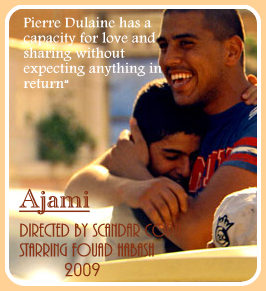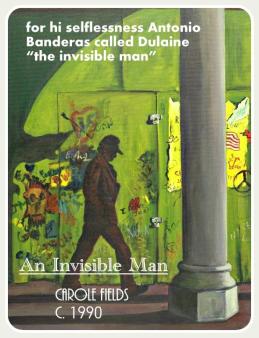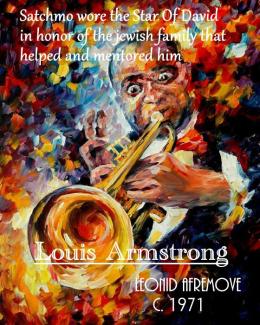2006, April 7 – PREMIERE OF “TAKE THE LEAD”
 Pierre Dulaine, is a kind of a special person; Antonio Banderas who plays him in “Take The Lead” called him “the invisible man”… in the film when Dulaine’s dance group of unlikely heros is victorious, instead of joining in the celebration, he simply turns around and walks out, hence “the invisible man”…Banderas says of the real Pierre Dulaine, “that’s the way he really is; that’s the way he does everything…his capacity to love and share without expecting anything in return”...the two tenants of his teaching method are “Respect and Compassion” and it is indeed these two elements which in real life led him to volunteer to teach dance to inner city trouble kids to give them hope…out of the effort was born Dancing Classrooms which helps young people to acquire life lessons of self esteem, respect, team work…the program has been duplicated in hundreds of schools throughout the United States…Pierre Dulaine was born in Jaffa, Palestine to a British officer, and a mother who was half French and half Palestinean…
Pierre Dulaine, is a kind of a special person; Antonio Banderas who plays him in “Take The Lead” called him “the invisible man”… in the film when Dulaine’s dance group of unlikely heros is victorious, instead of joining in the celebration, he simply turns around and walks out, hence “the invisible man”…Banderas says of the real Pierre Dulaine, “that’s the way he really is; that’s the way he does everything…his capacity to love and share without expecting anything in return”...the two tenants of his teaching method are “Respect and Compassion” and it is indeed these two elements which in real life led him to volunteer to teach dance to inner city trouble kids to give them hope…out of the effort was born Dancing Classrooms which helps young people to acquire life lessons of self esteem, respect, team work…the program has been duplicated in hundreds of schools throughout the United States…Pierre Dulaine was born in Jaffa, Palestine to a British officer, and a mother who was half French and half Palestinean…
***
They later settle in Amman Jordan where he learned to speak French, Arabic and English…in 1956 because of the Suez Crisis, they family had to leave in a hurry and leave everything behind; they settle in Birmingham England…His early days were difficult, he was shy and unsure in an alien evnviornment where his accented english did not help him to get accepted…at the age fourteen he discovered dancing … by his own admission he was not good but he liked it; eventually he went on to win ballroom dancing’s most prestigious awards….today it is part of his teaching philosophy, “if you like dancing you can become a good dancer even if you are not particularly gifted”, he says…eventually he settled in New York where he met his  dancing partner Yvonne Marceau..Antonio Banderas was personally inspired by the whole idea and in fact during the rehearsals he would invite the dancers to his house for dinner so that he could get to know them better and he had long conversations with Pierre Dulaine…film critic Tony Medley summarized the film accurately when he said, “it held my interest throughout and passed the watch test with flyng colors”
dancing partner Yvonne Marceau..Antonio Banderas was personally inspired by the whole idea and in fact during the rehearsals he would invite the dancers to his house for dinner so that he could get to know them better and he had long conversations with Pierre Dulaine…film critic Tony Medley summarized the film accurately when he said, “it held my interest throughout and passed the watch test with flyng colors”
____________________
CLICK HERE – http://www.youtube.com/watch?v=DEwZIufmafo to see the tango scene in Take The Lead

















